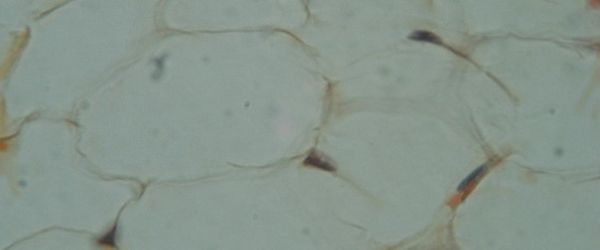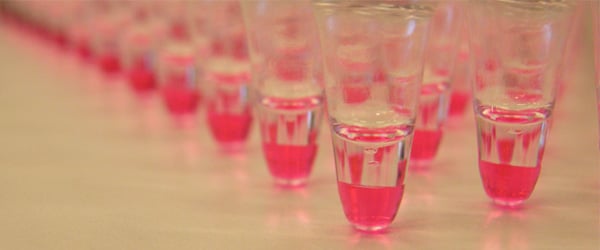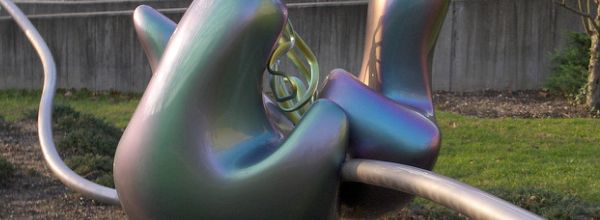Quantitative PCR (qPCR) uses fluorescent dyes or probes to visualize the amplification of specific DNA sequences as it happens (i.e. in real time). The dyes or probes fluoresce when they bind to newly amplified DNA, and the amount of fluorescence emitted is proportional to the amount of DNA (or mRNA) present in the original sample.
By detecting newly synthesized DNA during the exponential phase, qPCR is more sensitive and accurate than end-point PCR. Because of the sensitivity of the fluorescent signal, minute (down to picogram) quantities of DNA can be detected accurately using this technique.
qPCR is used across a wide range of disciplines such as:
- Research – to study gene expression, to unravel biochemical and signaling pathways, to study microRNAs and ncRNAs
- Diagnosis and Medicine – to diagnose genetic diseases, to identify new disease-related genes, to monitor and trace disease outbreaks
- Genotyping and Quantitation – to monitoring viral load in HIV+patients undergoing antiviral therapy, to find new disease-related single nucleotide polymorphisms (SNPs)
- Microbiology – to identify new microbial species, to monitor public water safety, food safety
Our Top 10 Tips for Consistent qPCR
qPCR requires a certain amount of technical finesse to ensure consistent data across experiments. The main challenges encountered when starting out with this technique are contamination issues or inconsistency between replicates. The cost of running qPCR is much higher than end-point PCR, so getting every experiment right may also be critical for your lab budget.
Below are our top 10 tips to help you to get consistent qPCR data every time!
1. Always Mix the Reagents Well Before Use
qPCR reagents include dyes, nucleotides and enzymes that may settle while sitting in the freezer or refrigerator. Make sure to mix your individual reagents thoroughly before preparing your master mix. Similarly, pipette your master mix thoroughly before aliquoting into your plate or tubes to avoid uneven distribution of reagents between reactions.
2. Store Primers in a Buffer to Protect Their Stability
When your primers arrive, avoid resuspending the master stock in water. The pH of water can be low (especially if it is DEPC-treated), leading to primer degradation over time. Instead, use a buffered solution at neutral pH to protect your primers from acid hydrolysis. Tris-EDTA (TE) is a common choice. The EDTA (1 mM) will inhibit potential DNAse activity, and when you dilute the primers for working stocks, the EDTA should be sufficiently diluted so as not to interfere with Taq polymerase activity.
3. Aliquot the Primers
Once you have a master stock (usually 100-200 mM), you should make working stocks to avoid multiple freeze/thaw cycles of your original primer solution. Prepare these working stocks (10-20 mM) in TE buffer in volumes to suit your needs. Limit yourself to three freeze/thaw cycles of these working stocks. Repeated freezing/thawing can lead to primer degradation, which may negatively impact your qPCR results e.g. reduced qPCR efficiency and reduced sensitivity.
Preparing aliquots will also help you out in the event of primer contamination. If you accidentally contaminate one vial of primer, you can throw it away and take a fresh one without worrying about contaminating the master vial.
4. Use Pipettes Calibrated for Low Volumes
If you require absolute accuracy in quantification, use pipettes calibrated for low volume pipetting (such P2 or P10) to prepare your standard curves and qPCR reactions.
Using the right pipettes ensures reproducibility between replicates. This is important when you are measuring qPCR efficiency based on standard curves, as you need to be sure that you are truly measuring qPCR efficiency and not your pipetting skills. Also, make sure that your pipettes are accurate before you start out!
5. Perform a Standard Curve for Every New Primer Pair
Don’t assume that every set of primers you order is going to work as well as the last. qPCR efficiency can be influenced by a number of factors. The best practice is to run a 5-point standard curve with 10-fold dilutions for every new primer pair and make sure you can get at least 90% qPCR efficiency with control DNA.
6. Follow the Three Room Rule
One of the biggest sources of contamination is using the same pipettes for all parts of the qPCR workflow i.e. DNA extraction, PCR and PCR product handling post-run. This is not advisable even if you use aerosol resistant tips at all times. For qPCR, always use a set of pipettes that are solely dedicated to qPCR reaction set up.
In addition to using these dedicated pipettes, you should keep them away from the room used for DNA/RNA extraction. The ideal set up is to have three rooms; one for nucleic acid extraction, one for reaction set up (with a hood containing a UV lamp to pre-treat pipettes and plastics between users), and one for the qPCR cycler.
This is the safest way to minimize the risk of contamination in your negative controls.
7. Double Check the Cycling Conditions
This is important if you are using a shared instrument. Even if you have your own template file set up, double check your run cycle before hitting start. Someone may have made small changes to your cycling template (e.g. annealing temperature, hot start activation time) without your knowledge.
8. Dilute the Template (Less May Be More)
Depending on the gene(s) of interest, you might actually be starting with too much template. qPCR is so sensitive that less template often gives a more accurate measurement.
Ideally, you want your samples to cross the cycle threshold between cycles 20-30. Samples that cross the threshold before cycle 15 will fall into the default baseline setting on most instruments, and this will lead to a subtraction of fluorescence signal from other samples in the run. You can remedy this by adjusting the baseline setting, but if you are unfamiliar with your instrument, you may need to call technical service for help.
Also, if there were any inhibitors in the sample from the purification step (e.g. guanidine salts or ethanol), diluting the sample will minimize their impact on the results, boosting your chances of accurately quantifying your target.
The best approach for a new sample is to perform a standard curve – even just a 3-point dilution series – to determine the template concentration that results in a Cq within range of your qPCR efficiency standard curve.
9. Make Dilutions Fresh
Nucleic acids stick to plastic so if you want to store a dilution series for future runs, you will need to prevent the nucleic acids from absorbing to the tube walls, thus becoming diluted over time.
You can achieve this by using a carrier nucleic acid, such as tRNA, or by using specially treated plasticware that does not bind nucleic acids. Several manufacturers offer low retention tubes or silicon-treated tubes to circumvent this issue.
If you do store dilutions in non-treated tubes, you may want to recheck the most concentrated dilutions on a Nanodrop before use to make sure they match the expected concentration.
10. Make Sure Your Data Is Publication Worthy – Know the MIQE Guidelines!
There isn’t much point in spending time, money and energy setting up qPCR if you can’t publish your data. In 2009, a group of UK-based researchers compiled a checklist of the minimum information required to publish qPCR data. Their goal was to streamline qPCR approaches to achieve reliability of results, integrity of scientific literature, consistency between labs, and to increase experimental transparency (1).
This list is called the MIQE guidelines, and it should supplement your initial manuscript submission to a journal. Full disclosure of all reagents, sequences, and analysis methods used is necessary to enable other investigators to reproduce results. It is also stipulated that MIQE details are published either in abbreviated form or as online supplementary material.
Parting Words
While these tips may seem like common sense to qPCR experts, they should help newcomers to save a lot of time and money, and well as maximize their chances of getting consistent results!
If you want to share your best practices tips, get in touch with us by writing in the comments field!
Want more qPCR advice? Check out our top qPCR papers every researcher should know.
Literature:
-
Bustin SA, Benes V, Garson JA, Hellemans J, Huggett J, Kubista M, Mueller R, Nolan T, Pfaffl MW, Shipley GL, Vandesompele J, Wittwer CT (2009). The MIQE guidelines: minimum information for publication of quantitative real-time PCR experiments. Clin Chem. 55(4):611-22. doi: 10.1373/clinchem.2008.112797.
Originally published on January 20, 2009. Revised and updated in May 2017.






